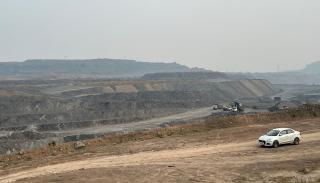
Breadcrumbs navigation
Gender and land-use change in South and Southeast Asian resource frontiers
Saba Joshi was awarded a BISA Early Career Small Research Grant (ECSRG). The grant helped Saba to consolidate an ongoing book project that examines gender and agrarian resistance in Cambodia and India. This included conducting further fieldwork in Central India. Here Saba discusses the project.
The BISA ECSRG enabled me to consolidate my ongoing book project that examines gender and agrarian resistance in Cambodia and India. During the grant period, I developed and finalised key components of my book project, including empirical chapters focused on the impacts of land dispossession on gendered division of labour in agrarian households and women’s participation in local movements against land and natural resource dispossession. The grant crucially allowed me to supplement my empirical materials by conducting further fieldwork on agrarian livelihoods and social movements in regions dominated by extractive industries in central India. My fieldwork involved household interviews, focus groups and participant observation in community meetings, and local protest events. I structured my field visit to include villages that have directly faced the loss of agricultural and forest lands, villages that have been threatened by dispossession and are currently in the process of losing land and those that are under threat but have not faced the loss of land. The differences between households across these three categories help identify the differences in patterns of social reproduction and livelihoods across the same district.
The main findings of this aspect of my study highlight the significant ways in which large-scale land acquisitions reshape the local geographies of labour, placing households situated near acquisition sites under major strain to sustain livelihoods dependent on small-scale agriculture. Additionally, I show how struggles against land dispossession in areas impacted by large-scale land acquisition are frequently framed as struggles of social reproduction. My interviews suggest that in agrarian resistance against extractive projects, social reproduction is not only framed in terms of household labour, involving biological or inter-generational reproduction, but also of communities. I find that such framings of movements—as struggles for indigenous or peasant identity—serve strategic goals, and at the same time, while not entirely representative of the movement composition. In my study areas in India, local movements challenging extractive industries are largely composed of cross-class and caste coalitions involving poorer peasants and Adivasi (indigenous) groups, but also larger landowners and upper caste members. Movement aims are not always consistent among members as more well-resourced and networked members of the group, are primarily concerned with compensation for land loss.
Meanwhile, landless villagers are not involved in movement activities, and extractive industries serve as a means of livelihoods via wage labour jobs. In my discussions with women activists, I find women activists rely on gendered framing that emphasise their roles as wives and mothers, highlighting their role in household social reproduction. Such gendered framing serves to legitimise women’s participation, both to their community members and state actors. In India, as in many parts of the world, land and environmental movements increasingly entail high risks for movement participants. My interviews with activists in India revealed how activists creatively and strategically navigate these risks with the support of external allies.
Photo by Saba Joshi